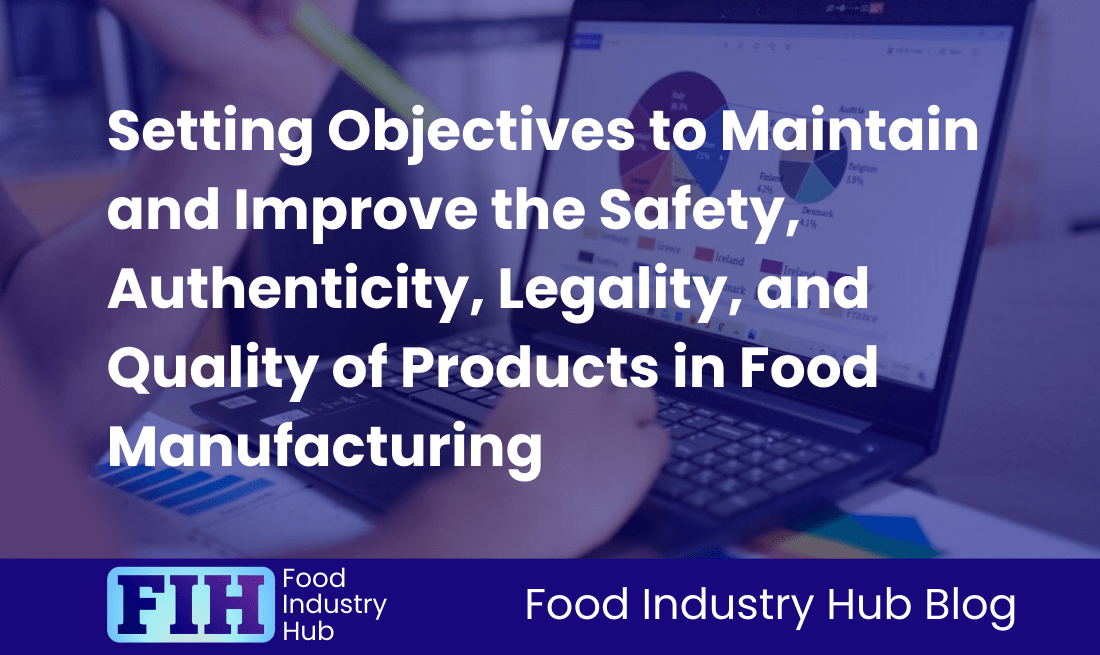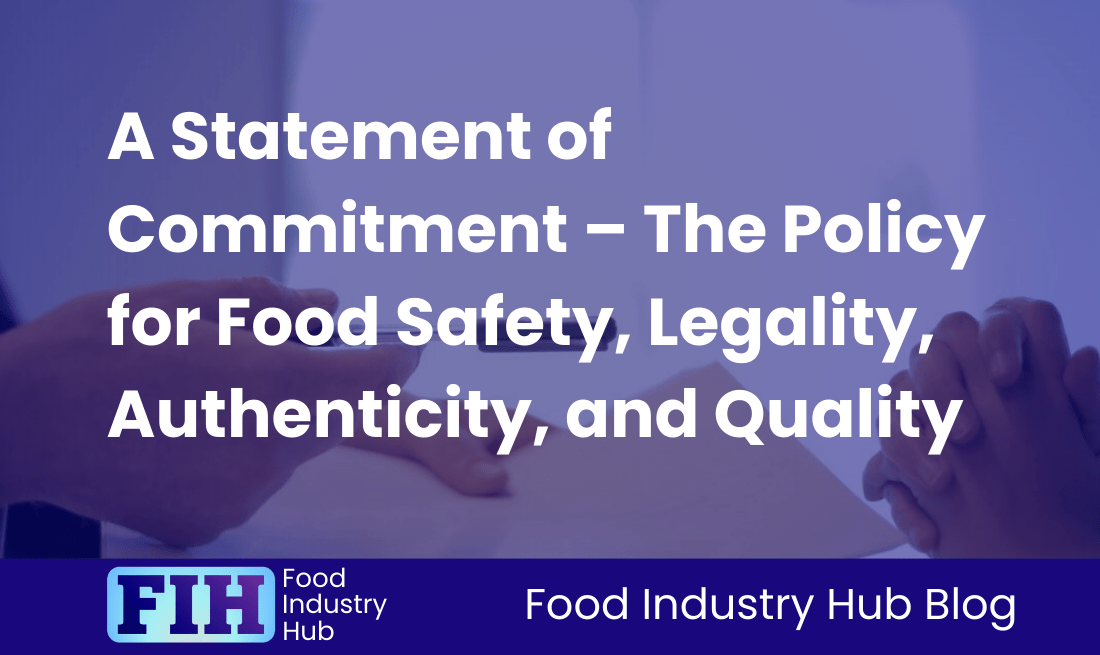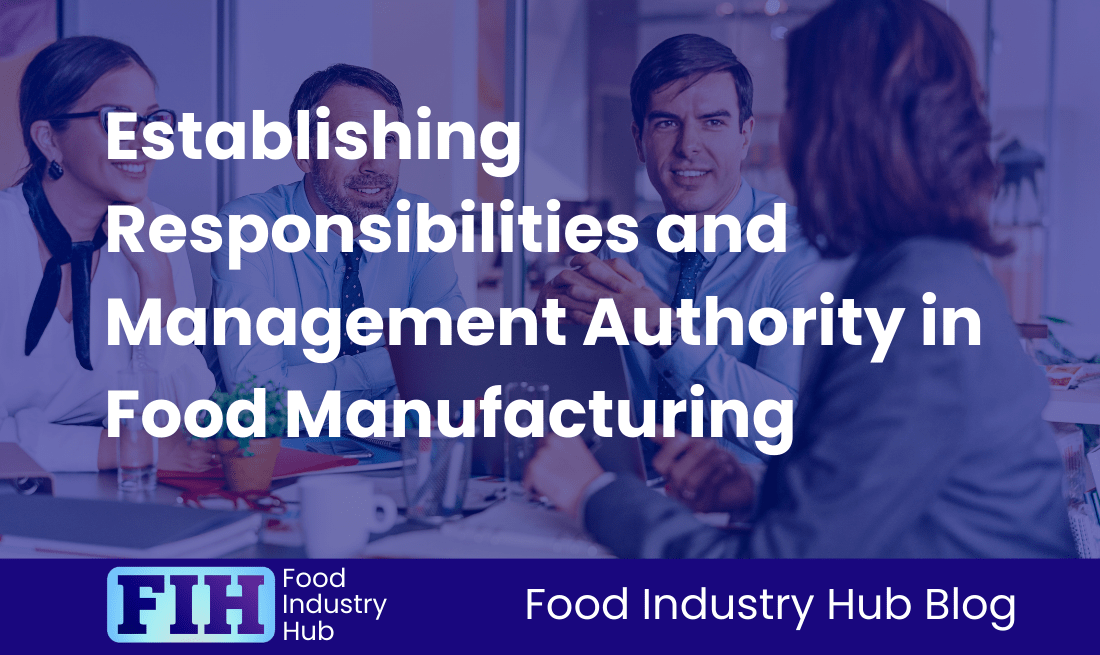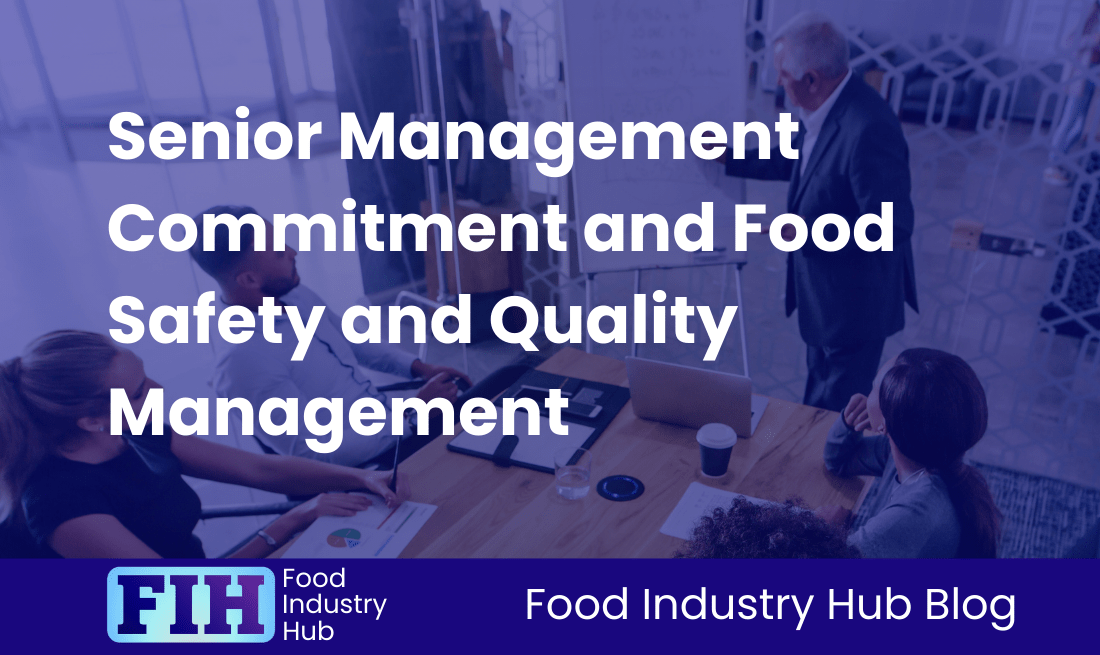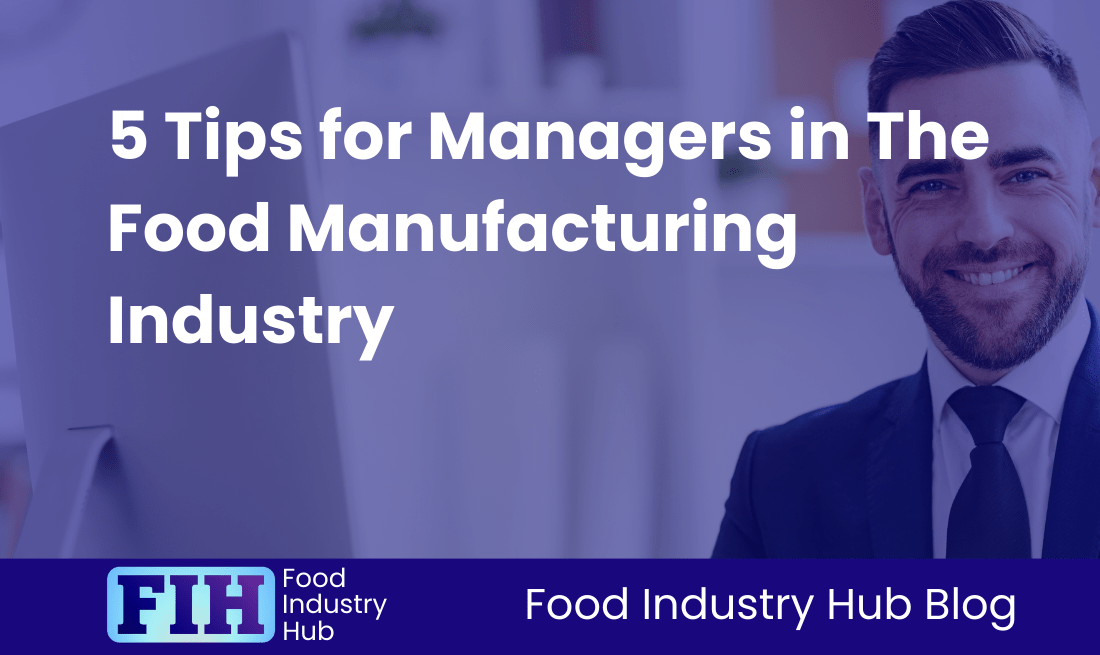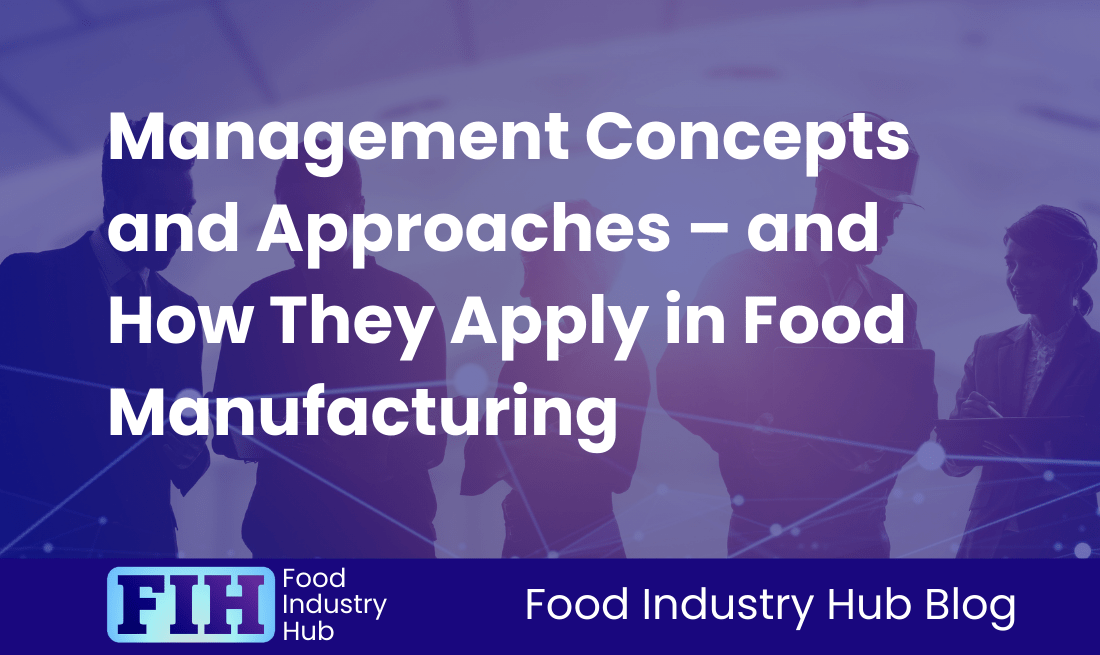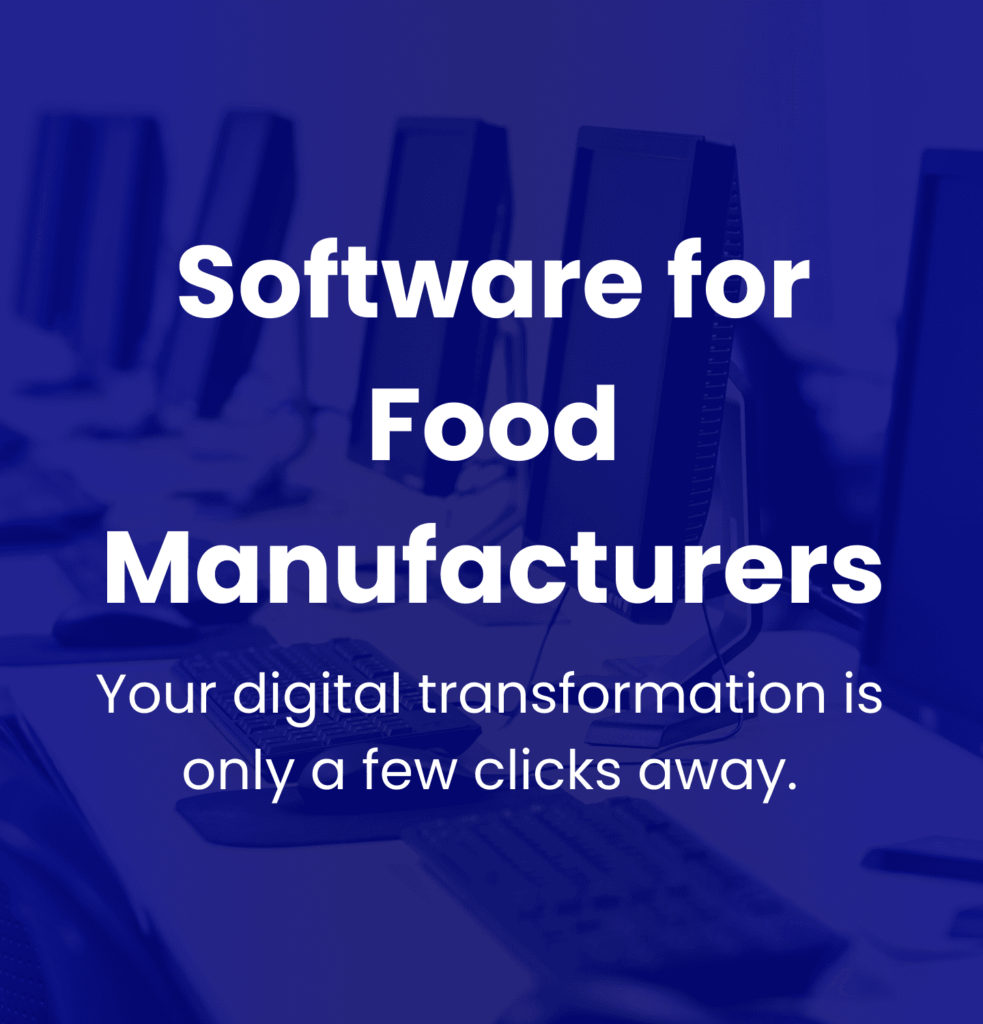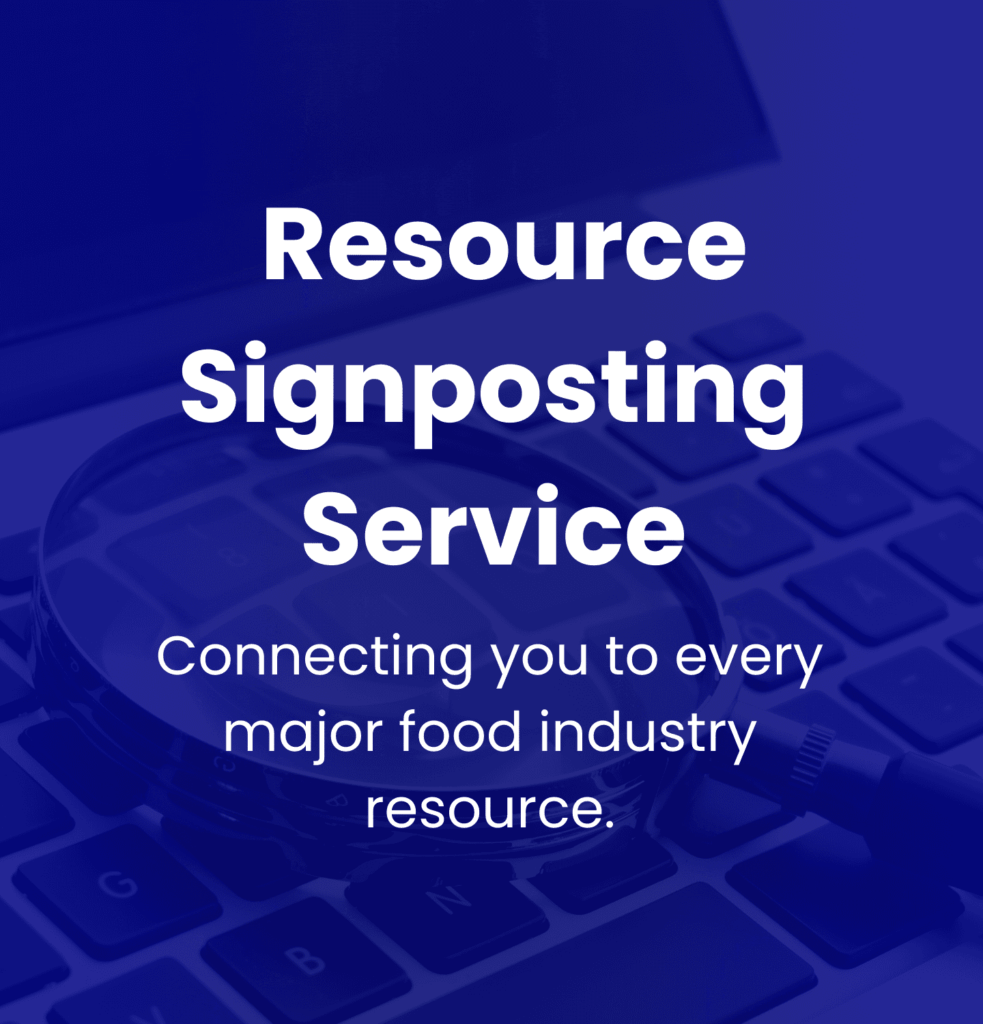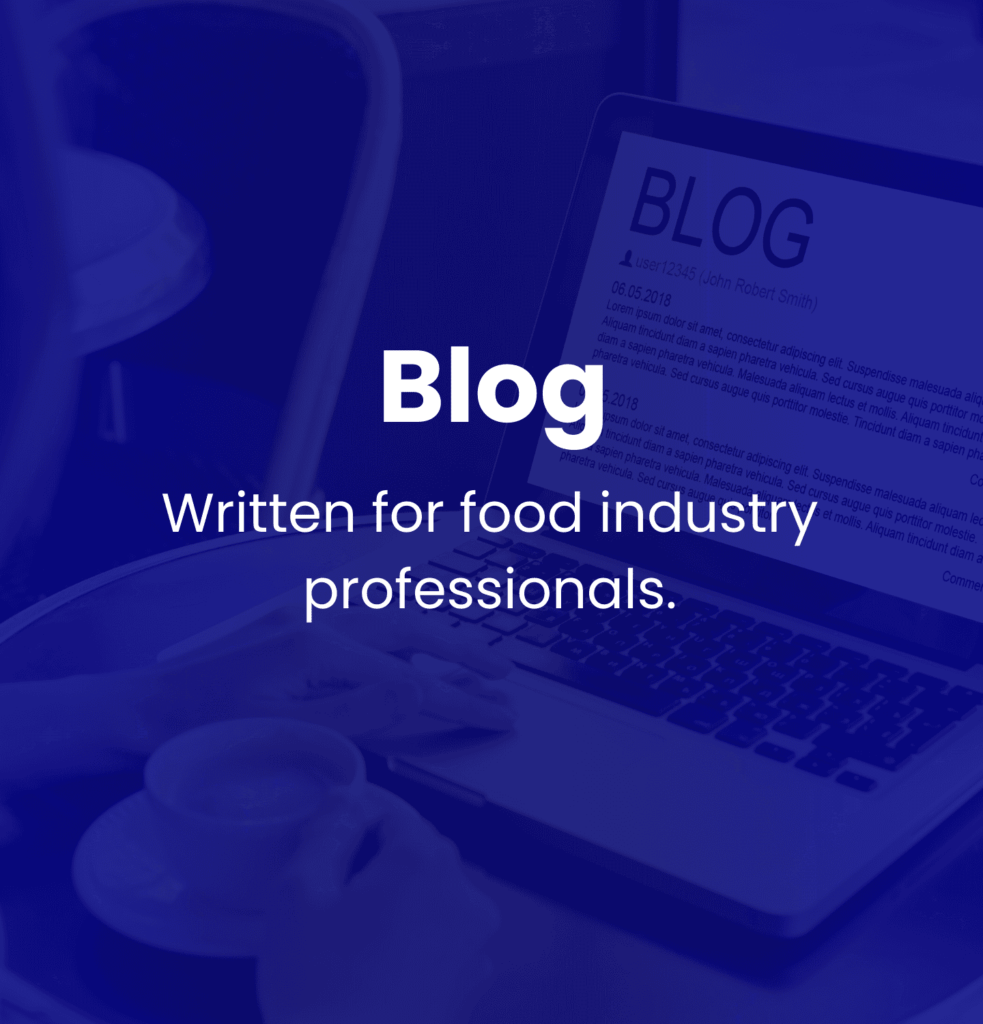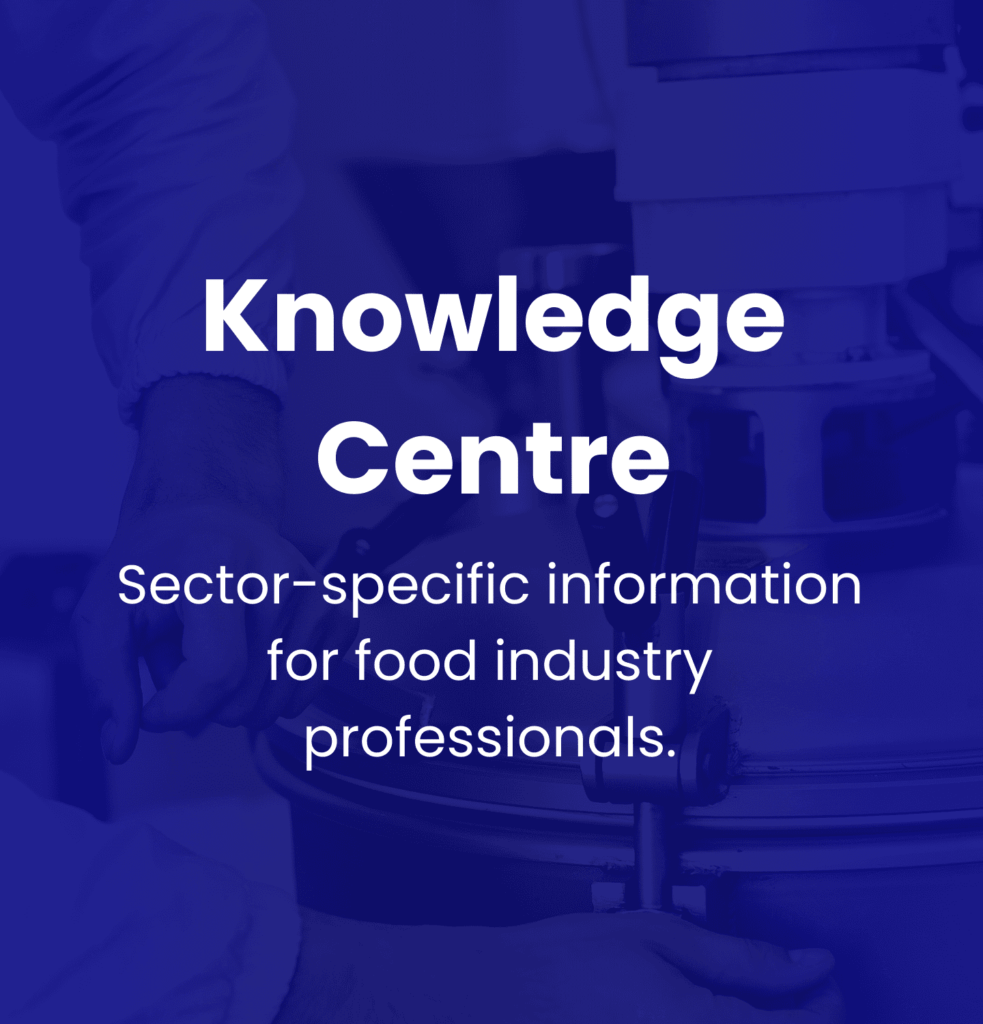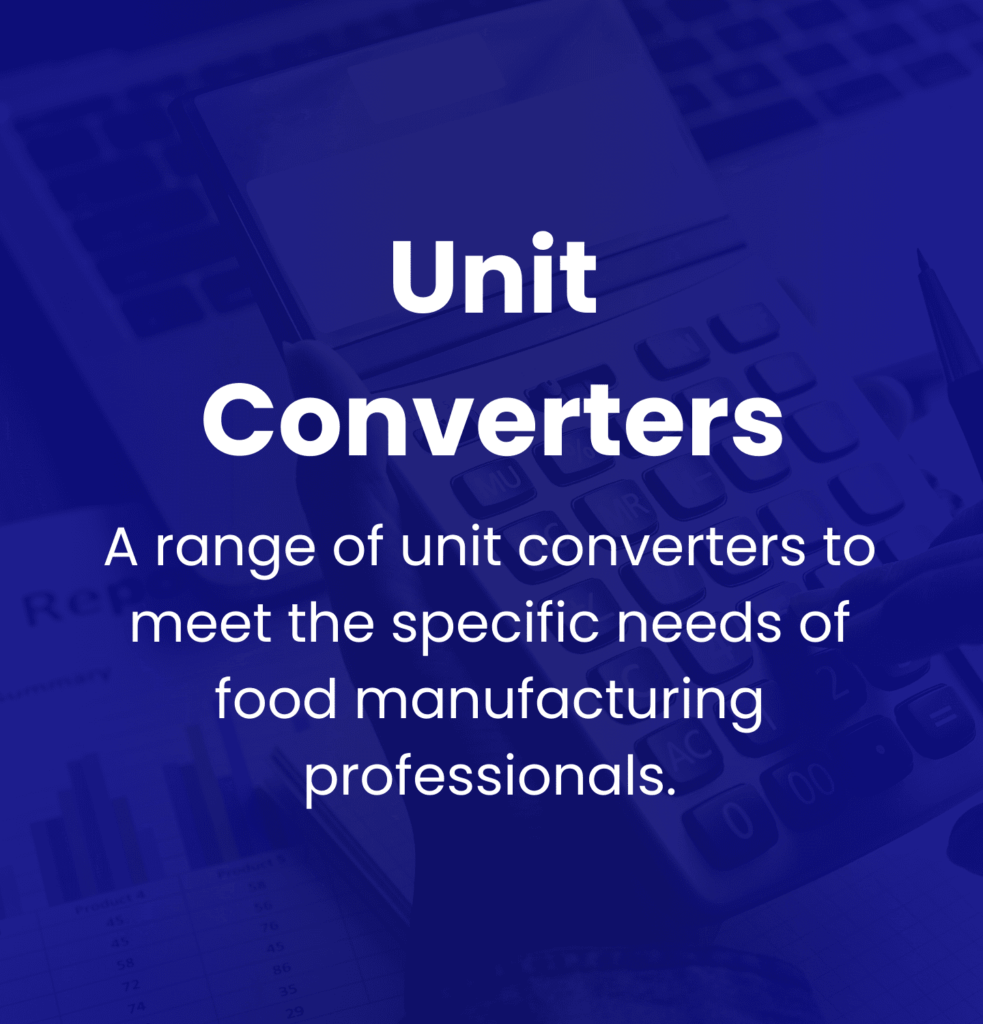Know: Quality Objectives
Contents
Introduction
Key Takeaways
Definition and Importance of Quality Objectives in Food Safety Management Systems (FSMS)
Regulatory Frameworks: Shaping Quality Objectives
Development of Effective Quality Objectives: The SMART Approach
Management and Implementation of Quality Objectives
Regional Differences in Quality Objectives: Comparison of UK, EU, and USA
Emerging Trends and Future Directions in Quality Objectives
Conclusion
Introduction
Quality objectives carry a pivotal role in food manufacturing, acting as benchmarks to safeguard the safety, quality, and compliance of food products. These specific targets are vital for aligning manufacturing procedures with business goals, preserving consumer trust, and meeting regulatory standards. By setting clear quality objectives, manufacturers underline their commitment to excellence, necessary for their progression.
Roles of Quality Objectives
In the food industry, the responsibilities of quality objectives go beyond mere compliance. They are woven into the core of production norms. By complying with established goals, manufacturers can lower risks associated with foodborne illnesses and product recalls, while simultaneously boosting consumer satisfaction and brand loyalty. The setting of these objectives cultivates a culture of continuous enhancement and accountability within organisations.
Food manufacturers set quality objectives to establish measurable goals for product quality and safety performance. The purpose is to establish an intention to achieve specific performance benchmarks and subsequently assess the success or failure of the business in achieving its stated targets. This instils strategic direction and facilitates ongoing improvement through the application of the plan do check act cycle.
Defining Quality Objectives
Quality objectives are quantifiable goals designated by food manufacturers to ensure that products consistently match established standards of quality, safety, and compliance with legal frameworks. These objectives are designed to be specific, measurable, achievable, relevant, and time-specific (SMART), thus guiding companies to track advancements and modify their procedures accordingly to maintain product integrity.
Importance of Quality Objectives
The importance of quality objectives is immeasurable. Primarily, they correspond with overarching business goals, enabling manufacturers to improve their processes for better efficiency and effectiveness. Additionally, quality objectives play a momentous role in guaranteeing food safety, directly impacting public health by preventing contamination and related dangers. Compliance with these objectives is also essential for meeting legal requirements, mitigating potential legal complications and retaining market presence.
Overview of Themes
The article will delve into various themes related to quality objectives in food manufacturing:
- Definition and Importance: A detailed exploration of what quality objectives entail and their substantial role in ensuring food safety and consumer trust.
- Regulatory Frameworks: Review of the legal standards and guidelines influencing the formulation of quality objectives.
- Development and Application: Insights on how quality objectives are devised and applied within food manufacturing procedures.
- Management: Best practices for managing and monitoring quality objectives effectively to ensure constant compliance and quality assurance.
- Regional Considerations: Comparison of how regional regulations and market dynamics shape quality objectives globally.
- Future Directions: Dialogue on emerging trends and technologies that are set to impact the future of quality objectives in the food industry.
By engaging with these themes, food manufacturers can traverse the complexities of quality assurance and boost their operational procedures, safeguarding their products and reputations in a competitive market.
Key Takeaways
Quality objectives are foundational in food manufacturing, underpinning business success, food safety, and legal compliance. Establishing clear and measurable quality objectives is essential as they drive operational excellence, enhance customer satisfaction, and safeguard brand reputation. These objectives aid in minimising risks associated with foodborne illnesses through rigorous safety standards, while reinforcing adherence to legal regulations, hence preventing costly fines and legal challenges.
Compliance Influence on Quality Objectives
Frameworks, such as the Food Safety Modernisation Act (FSMA), Hazard Analysis and Critical Control Points (HACCP), ISO standards, and GFSI-benchmarked assurance schemes significantly shape and determine the formulation of quality objectives. FSMA encourages a proactive stance towards food safety, advising companies to employ preventive measures throughout the supply chain. HACCP aids in identifying control points in production where safety risks can be effectively managed, thus assisting in establishing specific quality goals. ISO standards, meanwhile, offer a comprehensive framework for quality management, ensuring consistency and compliance across various markets.
Implementation Strategies for Quality Objectives
To properly develop and execute quality objectives, food manufacturers can adopt strategic approaches and employ a variety of tools. Investment in advanced technology for testing and inspection can aid in the early identification of potential quality issues. Continuous employee training on evolving food safety standards is indispensable for maintaining compliance and improving quality. Transparency in the supply chain, achieved by selecting reputable suppliers and actively seeking customer feedback, also plays a part in refining quality objectives.
Future Trends and Quality Objectives
In the future, trends such as digital transformation, sustainability, and an amplified focus on transparency will substantially impact quality objectives. The integration of digital tools and data analytics will facilitate improved monitoring and more accurate quality control. As consumer expectations evolve, quality objectives will increasingly align with sustainable practice and ethical sourcing principles, reflecting wider societal values. Embracing these trends will allow food manufacturers to not only meet regulatory standards, but also to prosper in an increasingly competitive market landscape.
Food Industry Hub Management Systems can significantly boost the effectiveness of your food safety and quality management system, leading to improved confidence and elevated quality assurance throughout your operations.
Definition and Importance of Quality Objectives in Food Safety Management Systems (FSMS)
Quality objectives within a Food Safety Management System (FSMS) provide specific and measurable goals. Their aim is to ensure the safety, quality, and legality of food products across the complete manufacturing chain. They set the structure for the FSMS, a strategic approach utilised by food manufacturers to identify, prevent, and minimise food safety risks, starting from raw material sourcing through to the final distribution. Setting quality objectives is essential as this directs companies to maintain adherence with regulatory standards and safeguard consumer health by mitigating risks linked to foodborne diseases.
Quality objectives play a key role for food manufacturers – they aid in the methodical implementation of safety measures. They encourage the establishment of a sound food safety culture within organisations and adherence to assurance schemes such as FSSC 22000 and BRCGS. This not only improves product quality but also protects business integrity by reducing risks of incidents that may lead to expensive recalls or harm to reputation.
Quality Objectives as Cornerstones of a Food Manufacturer’s Quality Management System (QMS)
In the context of a food manufacturer’s Quality Management System (QMS), quality objectives serve as the bedrock, guiding all activities related to quality. The QMS comprises a comprehensive mechanism of controls devised to uphold food safety and ensure product authenticity and quality. Quality objectives translate high-level safety policies into practical targets and promote continuous improvement that corresponds with operational tasks and relevant food safety regulations.
By establishing clear quality objectives, manufacturers create key internal standards that guide the allocation of resources, staff training, and process controls essential for protecting food safety. This linkage between stated objectives and operational practices infuses quality into every stage of production, ensuring consistent compliance with safety and quality standards [Source: Food Safety Magazine].
In much the same way as a specification establishes acceptable quality standards for a product, quality objectives establish acceptable quality performance for a food manufacturing business and its management teams. Effective quality objectives define aspirational targets for assurance systems, processes, and departmental activities – all of which ultimately influential on product acceptance and customer satisfaction.
Quality objectives serve as a strategic tool to orient business strategy and operational activities around the fulfilment of predefined goals. They are instrumental in targeting managerial influence and bringing unity across department’s and teams.
Impact of Quality Objectives on Safety, Quality, and Legality
Quality objectives significantly influence food safety, product quality, and adherence to legal necessities. They enable manufacturers to define clear, measurable targets that aid in preventing food safety hazards and guaranteeing that products are safe for consumers. For instance, setting a maximum allowable limit for microbial counts or chemical contaminants substitutes public health risks with manageable safety targets.
These objectives also promote compliance with international regulations, reducing the potential for food recalls and compliance issues significantly, and in turn protecting consumers and boosting brand reputation. Food Safety Objectives (FSOs) re key players in this respect – they set acceptable risk levels at the point of manufacturing and validate preventive controls, bolstering compliance with legal standards.
Quality Objectives as Measurable Key Performance Indicators (KPIs)
Quality objectives also serve as Key Performance Indicators (KPIs) within the FSMS framework. They offer quantifiable metrics for assessing the effectiveness of food safety systems and compliance with regulatory and assurance scheme expectations. KPIs, for example, might include compliance rates with food safety protocols, the effectiveness of control points, and success in achieving food safety objectives in line with benchmarks set by industry standards.
Through the continuous measurement of these KPIs, food manufacturers can monitor trends, pinpoint improvement areas, and document evidence of compliance and quality performance. This data-driven approach is necessary for validating food safety measures, managing risks, and ensuring ongoing improvement of safety and quality standards throughout the manufacturing process.
The utility of quality objectives as KPIs is significant, as they allow senior management to measure actual performance against predetermined performance indicators and determine the success or failure of the business in achieving its objectives. In this way, quality objectives form a benchmark that a food manufacturer’s management team can be evaluated against.
Compliance Frameworks: Shaping Quality Objectives
Regulatory frameworks such as the Food Safety Modernisation Act (FSMA) and assurance schemes such as IFS are pivotal in defining quality objectives within the food manufacturing industry. These frameworks ensure compliance with food safety, authenticity and legal standards throughout the production process.
Overview of Compliance Frameworks
The FSMA advocates for preventive strategies to enhance food safety. It requires food manufacturers to develop extensive food safety plans that incorporate Good Manufacturing Practices (GMPs) and a Hazard Analysis and Risk-Based Preventive Controls (HARPC) strategy. Mandated by this framework, manufacturers tackle potential food safety hazards, thereby refining their quality objectives to focus on contamination prevention and the introduction of methodical food safety measures. Effective FSMA implementation can reduce foodborne illnesses, highlighting its pertinent role in defining concrete quality objectives that align with national safety standards.
The HACCP acts as a structured instrument to manage hazards throughout the food production process. It empowers manufacturers to identify critical control points (CCPs) where potential risks may occur, thereby sculpting quality objectives to proactively subdue these risks. By adhering to HACCP principles, manufacturers establish measurable safety targets, such as metrics for pathogen reduction, essential for preserving product integrity and maintaining consumer health. HACCP’s structured approach associates with substantial decreases in contamination incidents, proving its effectiveness in guiding quality objectives.
ISO standards, specifically ISO 9001 for quality management and ISO 22000 for food safety management systems, provide a regimented framework for managing quality and compliance. These standards underscore principles of continuous improvement and stakeholder engagement, inspiring manufacturers to formulate quality objectives that are quantifiable and achievable. The application of these standards has been proven to bolster customer satisfaction, hence connecting operational objectives to long-term business success.
Quality Objectives in a Compliant Context
Compliance requirements shape quality objectives by defining operational protocols for ensuring product safety and legality. Essential components include:
- Regulatory Compliance: Quality objectives should be in tune with laws such as the FSMA and the EU’s General Food Law to ensure that products consistently meet defined standards for safety and labelling [Source: EC].
- Risk Management: Emphasis on effectively identifying and managing risks via HACCP risk assessment assists manufacturers in devising quality objectives that tackle specific hazards and critical control points.
- Continuous Improvement: Standards such as BRCGS and FSSC 22000 demand an ongoing evaluation of quality objectives and practices, thus promoting processes that enhance food safety and customer trust sustainably.
Role of Quality Objectives in Addressing Hazards and Ensuring Safety
Quality objectives play an important role in addressing potential hazards in food production, enabling manufacturers to:
- Identify and Control Hazards: Systems like HACCP allow organisations to manage hazards methodically by establishing measurable quality objectives related to sanitation, temperature controls, and allergen management.
- Ensure Product Legality and Safety: By establishing quality objectives that align with regulatory requirements, manufacturers can ensure that products not only meet safety standards but also adhere to criteria for quality and authenticity.
- Boost Consumer Trust: The adoption of transparent, compliant quality objectives enhances consumer confidence in products, a key factor for establishing a strong market reputation.
Effective frameworks eventually improve food safety and legality by ensuring comprehensive risk management, compliance with legal standards, and gaining consumer trust. Consequently, they position food manufacturers for enduring success in this competitive industry.
Sign-up for the Food Industry Hub Mail Service
We regularly produce new content for food industry professionals, and the Food Industry Hub Mail Service is the best way to stay up to date with the latest additions.
Signup today to be added to the Food Industry Hub mailing list.
Development of Effective Quality Objectives: The SMART Approach
Overview of the SMART Framework
The SMART framework plays a cardinal role in shaping effective quality objectives within the arena of food manufacturing. This approach ensures that objectives are Specific, Measurable, Achievable, Relevant, and Time-bound, thereby boosting performance and compliance across a multitude of operations. The net result is the creation of clear zones for improvement, driven by well-articulated goals. As an illustration, an objective could relate to heightening the microbial safety of a specific product line by introducing a 20% increase in analytical testing within two months of setting the objective. Specificity enables teams to comprehend precisely what needs to be accomplished, augmenting accountability within the organisation.
The Measurable component necessitates the creation of quantifiable metrics for tracking progress and determining success. This might involve numeric targets like bringing down contamination incidents by 25% within a year. Not only do such outcomes facilitate the monitoring of improvements, but they also inspire teams via more transparent performance measures.
Achievable objectives assure that goals are feasible considering the organisation’s existing resources and capabilities, thereby helping sustain team morale. As an example, setting an objective of achieving a 50% reduction in waste may be overly ambitious without the right resources; so a more realistic target could be more effective.
Forming quality objectives in line with the SMART framework further reinforces the functional significance of the objectives, as it allows for a success/failure determination to be made.
Significance of Measurable Outcomes and Engagement of Stakeholders
Establishing measurable outcomes is a key factor in monitoring the effectiveness of quality objectives. These trackable targets facilitate accurate reporting and inspire motivation among employees. The achievement of specific reductions in contamination rates or product defects serves as clear indicators of progress, bolstering confidence in the quality management system. Measurable outcomes also enable businesses to challenge the effectiveness of their efforts in achieving the targets set.
Engaging stakeholders at every level of the organisation is important in setting these objectives. Incorporating suggestions from employees, management, and even external partners encourages a sense of shared responsibility. This interaction builds alignment with the objectives across the board, and a collective comprehension of the roles each individual must play in achieving them. This collaborative approach cultivates an environment of accountability and shared stewardship of quality procedures, eventually paving the path for improved quality outcomes.
Link between Regulatory Compliance and Prevention of Food Contamination
SMART objectives are inherently connected with the achievement of regulatory compliance and the prevention of food contamination. By setting specific and measurable goals, food manufacturers can ensure adherence to relevant regulations and the implementation of robust safety protocols aimed to reduce contamination risks. For example, a SMART objective could be to improve sanitation practices to meet health requirements, consequently reinforcing adherence to both local and international food safety norms.
By setting objectives that directly address contamination prevention—such as enhancing staff training on food handling techniques—companies significantly improve consumer safety and lessen the risk of expensive product recalls. In synchronising quality objectives with regulatory frameworks, organisations can navigate the challenges of compliance more effectively, thereby protecting public health and their brand’s reputation.
Management and Implementation of Quality Objectives
The food manufacturing industry requires an ongoing commitment to improving quality control mechanisms in an era of ever-changing regulations and increasing consumer expectations. This involves a continuous cycle of evaluating manufacturing methods, identifying areas for improvements, and implementing effective changes to products and services. When organisations turn to data-led feedback mechanisms, they are able to assess performance levels in their manufacturing processes and rectify any compliance issues identified along the way. This benefits both product safety and overall quality.
By adopting continuous improvement methodologies, such as Lean or Six Sigma, waste can be significantly reduced which in turn optimises operational efficiency. This becomes important for maintaining high-quality standards in a highly competitive marketplace.
Employee Engagement and Continuous Development
In line with the continuous improvement mindset, staff training plays a significant role in quality control. As employees acquire the essential skills required by their roles, they become better positioned to comply with changing regulatory standards. A workforce that stays abreast of the latest quality management practices contributes proactively to fulfilling an organization’s quality objectives.
Supplier Management and Corrective Action Plans (CAPs)
Effective supplier management practices are central to upholding quality objectives in food manufacturing. Ensuring that raw material safety and quality standards are met goes a long way in lessening the risk of product contamination and avoiding major public health issues. In-depth supplier assessments, including confirmation of food safety regulation compliance and regular audits of adherence to quality benchmarks, are recommended. Rigorous supplier management directly betters the quality and standards of products, resulting in fewer recalls and greater consumer trust. In practice, this means that quality objectives should be established which set specific targets for supplier management and supply chain risk mitigation functions.
Corrective Action Plans (CAPs) identify non-compliance through root cause analysis, set forth corrective measures, and diligently work towards resolving issues to prevent any future instances of non-compliance. This targeted approach helps maintain quality objectives and indicates a commitment to ongoing improvement in product safety and regulatory compliance. As companies implement CAPs, they are reporting increased product reliability and greater commitment to regulatory frameworks.
Implementing Quality Objectives: Regulations and Monitoring Processes
The successful execution of quality objectives goes hand in hand with compliance and adherence to regulatory and monitoring processes. Regulatory bodies like the Food and Drug Administration (FDA) and the European Food Safety Authority (EFSA) lay out strict rules which manufacturers need to comply with. This ties quality objectives to legal obligations. Tools such as Food Safety Management Systems (FSMS), including HACCP (Hazard Analysis and Critical Control Points) and ISO 22000, prove useful in setting up systematic processes for monitoring compliance and managing quality across the entire production process.
Comprehensive monitoring systems allow organisations to confirm their compliance through regular product quality testing and process audits. Undoubtedly, the intertwined relationship between quality objectives and compliance frameworks intensifies the effectiveness of quality management strategies and upholds the safety, authenticity, and legality of food products.
Regional Differences in Quality Objectives: Comparison of UK, EU, and USA
Regional regulatory landscapes notably shape the quality objectives in food manufacturing, affecting the way companies devise and apply their standards. It is essential for food manufacturers looking to comply with regulations while ensuring product safety and consumer satisfaction to comprehend these regional differences.
Influence of Regional Regulatory Landscapes on Quality Objectives
The regulatory framework within the European Union (EU) is extensive and precise, thus moulding quality objectives considerably. The General Food Law (Regulation (EC) No 178/2002) sets the fundamenatal principles for food safety, demanding manufacturers assure traceability and compliance across the supply chain [Source: EUR-Lex]. This law puts a spotlight on risk analysis and consumer protection as integral parts of quality objectives.
The United Kingdom (UK), despite some departures from EU regulations post-Brexit, maintains a robust standards portfolio. The UK Food Standards Agency (FSA) governs food safety regulations, stressing clear consumer information through systems like traffic light labeling. This system delivers at-a-glance nutritional data, shaping quality objectives to closely align with consumer safety and informed choice. Additionally, post-Brexit adaptations like the Genetic Technology Act of 2023, which permits gene-edited crops, sheds light on an evolving landscape that balances innovation with traditional safety issues [Source: UK Gov]. Evolutions in domestic regulations post-Brexit will have an increasing influence over food manufacturers’ quality objectives as further divergence from EU regulations becomes apparent.
Meanwhile, the United States (USA) follows a regulatory framework led by the FDA and USDA, which underlines compliance with guidelines focusing on ingredient disclosure and nutritional labelling. Although US regulations are generally considered less strict concerning pesticide residues compared to the EU, manufacturers are still obliged to stick to safety protocols, particularly allergen management. The FDA’s “Nutrition Facts” label mandates clear ingredient listings, reinforcing quality objectives centered on consumer transparency.
Regardless of the regulatory framework applicable, food manufacturers are obliged to comply with laws and regulations, so incorporating compliance into internally reviewed quality objectives is of significant importance.
Effect of Particular Regional Regulations
Regional regulatory differences have significant implications for the quality objectives set by food manufacturers in each region. The EU’s focus on the precautionary principle drives intensive pre-market testing and stringent supply chain transparency. In sync with the EU’s Farm to Fork Strategy, food producers have to formulate quality objectives that balance safety with sustainability, pressing them to innovate in their sourcing and production methods to adapt to evolving regulations [Source: EC].
Expanding on this, the EU’s rigorous standards on pesticide usage mandate manufacturers to monitor residual levels and also to update their quality objectives to incorporate sustainable practices. This may incentivise a shift towards organic farming and improving traceability systems throughout operations. In the UK, the stress on allergen labelling and accurate nutrition information similarly obliges manufacturers to evolve quality objectives that give importance to both consumer safety and regulatory compliance.
In the USA, the freedom given to companies regarding health claims puts forth a unique challenge and opportunity in formulating quality objectives. While this permits agility in marketing and product development, it necessitates rigorous validation of claims, thereby affecting how companies balance competitiveness with safety and consumer trust [Source: Choose Now].
The Role of Global Diversity in Shaping Quality Objectives
The global differences in regulatory expectations necessitate that food manufacturers tailor their quality objectives to effectively meet varying compliance needs. Internationally operating companies often consider the most robust standards as a benchmark, thus assuring that their products meet or surpass diverse regulatory checks across different markets.
Consumer preferences across different regions drive manufacturers to develop flexible quality objectives. With sustainability and ethical considerations emerging, particularly in the EU, organisations need to amalgamate these aspects into their production processes and quality frameworks. This versatile approach provides assurances that food products are in alignment not just with regulatory compliance but also with the evolving consumer expectations worldwide.
Comprehending the regulatory landscapes within the UK, EU, and USA is fundamental for manufacturers aspiring to uphold high-quality and safety standards while adapting to diverse consumer demands. Manufacturers should continually adjust their quality objectives to accommodate the regional peculiarities influencing market dynamics and product acceptance.
Emerging Trends and Future Directions in Quality Objectives
The food manufacturing industry is currently embracing a host of transformative technologies, contributing to a significant evolution in the sphere of quality objectives.
Technological Influences: Digital Transformation, Software Solutions, and IoT
Leading the pack in this technological advancement, Artificial Intelligence (AI) and Machine Learning open up new horizons for predictive analytics, enabling manufacturers to detect potential quality issues before they become problematic. Businesses utilising AI for the management of quality are set to experience enhanced efficiency and cost reductions.
Contributing to this digital transformation is the Internet of Things (IoT), which significantly streamlines quality control by automating key monitoring efforts. IoT sensors monitor essential aspects of the manufacturing process including temperature, humidity, and machinery performance. Real-time data capture enables quick adjustments, thus minimising error rates. The impact of IoT in food manufacturing is predicted to register a compound annual growth rate (CAGR) of 9.5% until 2028, pointing towards a move towards technology that reduces labour costs while maintaining robust quality standards.
Also, software solutions are finding application in improving traceability along the supply chain. Manufacturers improve trust and ensure regulatory compliance by using digital systems. Consumer demands for informed purchasing choices in a market revolving around health and sustainability are met by this increased level of traceability.
Where quality objectives have traditionally targetted benchmarks in operational performance and food safety and quality outcomes, food manufacturers may make technological adoption an objective in itself. Establishing an objective that software solutions should be actively embraced would have the duel effect of promoting safety and quality benefits yielded by technological solutions and improving competitiveness as progressive technologies are adopted across the industry.
Impact of Changing Consumer Expectations for Transparency
Food manufacturing companies are facing an ever-increasing call for transparency, which significantly reverberates with their quality objectives. It has been recognised that roughly 60% of U.S. consumers value food quality above other factors when making their purchasing choices. Therefore, manufacturers are under pressure to provide easily accessible data about their sourcing and safety measures. In answer to this demand, manufacturers are integrating technologies like QR code scanning and digital solutions into their quality objectives, offering consumers easy access to detailed product history. This practice not only reinforces regulatory compliance but also strengthens consumer trust by showcasing their commitment to transparency in relation to quality and safety.
Predictions for the Future: Sustainability and Transparency
Going forward, sustainability is set to play an increasingly significant role in shaping quality objectives. Companies are turning to innovative practices like controlled environment agriculture (CEA), including technologies like hydroponics and vertical farming. Not only do these methodologies optimise resource use, but they also cater to consumer preferences for environmentally-conscious products.
In tune with evolving consumer preferences for transparency, clear communication about the methods of production and their environmental impacts is becoming a norm in the food manufacturing industry. This clear communication, coupled with the integration of advanced technologies, helps in maintaining compliance with regulatory standards and results in improved consumer loyalty and competitive position.
The amalgamation of emerging technology along with changing consumer expectations for transparency, and the ever-increasing focus on sustainability forms the bedrock of the current transformation in quality objectives within the food manufacturing industry. A focus on these elements will not only enhance product integrity but also equip manufacturers to adeptly navigate the complexities of modern market requirements.
Conclusion
Revisiting the Importance of Quality Objectives
Quality objectives, within the food manufacturing sector, act as fundamental benchmarks that ensure routine safety, consistency, authenticity, and adherence to regulatory standards of food products. These objectives have a significant role in consumer safety — they stave off foodborne diseases through the strict control of pathogens, pollutants, and production hazards. According to industry insights, the attainment and consistent maintenance of these objectives can buoy consumer loyalty, safeguard brand reputation, and enhance operational efficiency through the reduction of waste and prevention of expensive recalls.
An Exploration of Regulations, SMART Approach, and Emerging Trends that Influence Quality Objectives
Regulatory frameworks significantly shape quality objectives by setting high standards for safety, legality, and authenticity. Adherence to these strict safety regulations helps manufacturing companies steer clear of substantial fines and product recalls. Also, meticulous documentation and verification support comprehensive efforts to ensure quality and adherence to regulations [Source: Food Safety Magazine].
The SMART (Specific, Measurable, Achievable, Relevant, Time-bound) approach supplies a structured methodology that aids in the development of quality objectives. This approach empowers food manufacturers to establish explicit, measurable goals that are achievable within their operational context and aligned with consumer safety and quality imperatives. Thus, businesses implementing SMART goals can uniformly track their progress and introduce continuous enhancements in their quality control processes.
Quality objectives are also being shaped by emerging trends like the adoption of modern technologies, including innovative testing equipment and software solutions for enhanced supply chain transparency. Matters of food authenticity have gained prominence in tackling fraud, coupled with the growing emphasis on sustainability and traceability to meet the ever-rising consumer expectations and regulatory requirements.
Reflecting on Future Trends and the Changing Landscape
The ever-changing quality objectives landscape in food manufacturing is predicted to be increasingly influenced by technological advancements such as real-time data analytics and enhanced analytical testing methods. These innovations will ensure more precise control and prompt responses to potential risks. Plus, with food safety merging into broader quality management systems, the focus will expand beyond just product safety to include authenticity, legality, and consumer trust.
Regulation modifications in the future are likely to demand more thorough compliance measures and require rigorous documentation for safety and quality affirmation. We expect a more profound focus on collective responsibility, advancing towards a culture of ongoing improvement through employee training and stakeholder collaboration.
We anticipate that quality objectives will continue to adapt, becoming more fluid and intricate to strategically accommodate innovation, sustainability, and consumer confidence on a global scale within the food supply chain.
About The Food Industry Hub Knowledge Centre
The Food Industry Hub knowledge centre delivers informative content on a variety of topics pertinent to the food manufacturing industry.
You can return to all topics by clicking here.
From The Food Industry Hub Blog
Expanding on this topic with related content from our blog.

